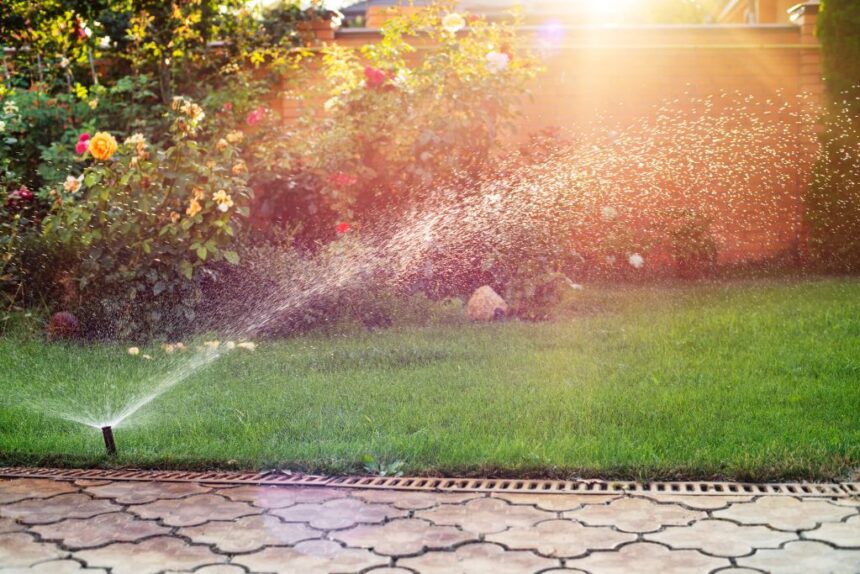A healthy lawn or garden doesn’t happen by accident—it needs consistent, well-timed watering. That’s why a sprinkler system installation can be one of the smartest investments for your property. But here’s the problem: when installation is done poorly, it can cost you far more in the long run. From uneven watering that damages your landscaping to water waste that spikes your utility bills, mistakes in sprinkler system installation can drain both your wallet and your patience.
The good news? With careful planning and the right techniques, you can avoid these expensive errors and set up a system that works efficiently from day one.
Mistake #1: Poor System Design
Not Matching the System to the Landscape
Every property has unique needs. Installing a one-size-fits-all sprinkler layout often leads to overwatering some areas while leaving others dry. Different plants, soils, and sun exposure levels require tailored watering zones.
Solution: Work with a professional or create a detailed irrigation plan that considers soil type, plant varieties, slope, and sun/shade areas.
Ignoring Water Pressure Requirements
If your system doesn’t account for your property’s water pressure, you might end up with weak spray in some areas and damaging overspray in others.
Solution: Measure water pressure before installation and choose nozzles, heads, and valves designed for your specific range.
Mistake #2: Incorrect Sprinkler Head Placement
Overlapping or Missing Coverage
Placing sprinkler heads too close wastes water and can cause flooding in certain areas. Too far apart, and you’ll get dry patches.
Solution: Follow the head-to-head coverage rule—each sprinkler’s spray should reach the next sprinkler head for even distribution.
Wrong Sprinkler Type for the Area
Using fixed spray heads where rotating heads are needed (or vice versa) can cause uneven watering and high water waste.
Solution: Use the right head type for the area size and shape. Rotary heads work for large spaces, while spray heads are better for smaller, defined zones.
Mistake #3: Skipping Proper Zoning
Mixing Plants with Different Water Needs
Water-loving flowers and drought-resistant shrubs shouldn’t share the same watering schedule.
Solution: Create separate irrigation zones for lawns, flower beds, shrubs, and trees so each gets the right amount of water.
Running All Zones at Once
Overloading your water supply by running too many zones at the same time can cause pressure drops.
Solution: Stagger watering times so each zone gets adequate water flow and pressure.
Mistake #4: Not Accounting for Seasonal Changes
Overwatering in Rainy Seasons
Running your sprinkler system during heavy rainfall not only wastes water but can harm your plants.
Solution: Install rain sensors or smart irrigation controllers that adjust schedules based on weather data.
Ignoring Winterization
If you live in a cold climate, leaving water in the system can cause pipes to freeze and burst.
Solution: Drain and blow out the system before winter to avoid costly repairs.
Mistake #5: Using Low-Quality Materials
Cheap Pipes and Fittings
Low-grade plastic pipes can crack under pressure or sunlight exposure.
Solution: Invest in UV-resistant pipes and commercial-grade fittings for long-lasting durability.
Basic Timers Instead of Smart Controllers
Old manual timers waste water and can’t adjust for environmental conditions.
Solution: Upgrade to a smart controller that adapts watering schedules automatically.
Mistake #6: Neglecting Regular Maintenance
Not Checking for Leaks
A small leak can waste hundreds of gallons of water over time.
Solution: Inspect your system regularly for wet spots, pooling water, or unusually high water bills.
Clogged Nozzles
Dirt and debris can block nozzles, leading to uneven spray patterns.
Solution: Clean or replace nozzles regularly to maintain even coverage.
How to Do Sprinkler System Installation Right the First Time
Plan Your Layout Carefully
Draw a diagram of your property, marking watering zones, head placement, and pipe routes.
Use the Right Tools and Parts
Choose commercial-grade heads, valves, and pipes for better performance and lifespan.
Test Before You Backfill
Run the system before covering pipes to spot leaks, low pressure, or poor coverage.
Automate for Efficiency
Smart irrigation controllers and soil moisture sensors save water and keep your plants healthy without daily manual adjustments.
Conclusion
Installing a sprinkler system is a long-term investment in the beauty and health of your landscape. But without proper planning, quality materials, and precise installation, it can quickly turn into an expensive headache. From poor system design to skipping maintenance, the most common mistakes lead to wasted water, higher bills, and damaged lawns.
By avoiding these pitfalls and focusing on strategic planning, proper zoning, and seasonal adjustments, you can ensure your sprinkler system delivers consistent, efficient watering year-round—right from the very first day it’s installed.


